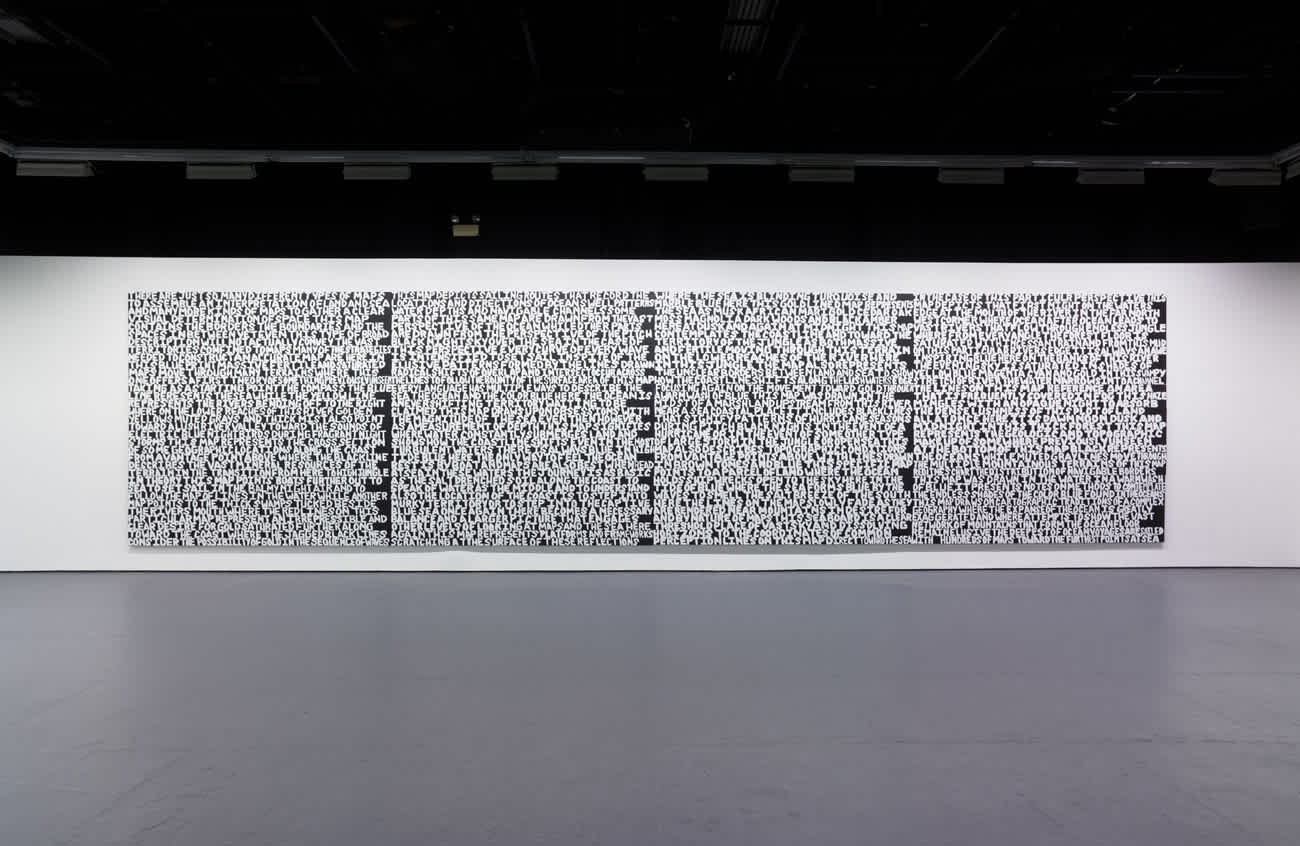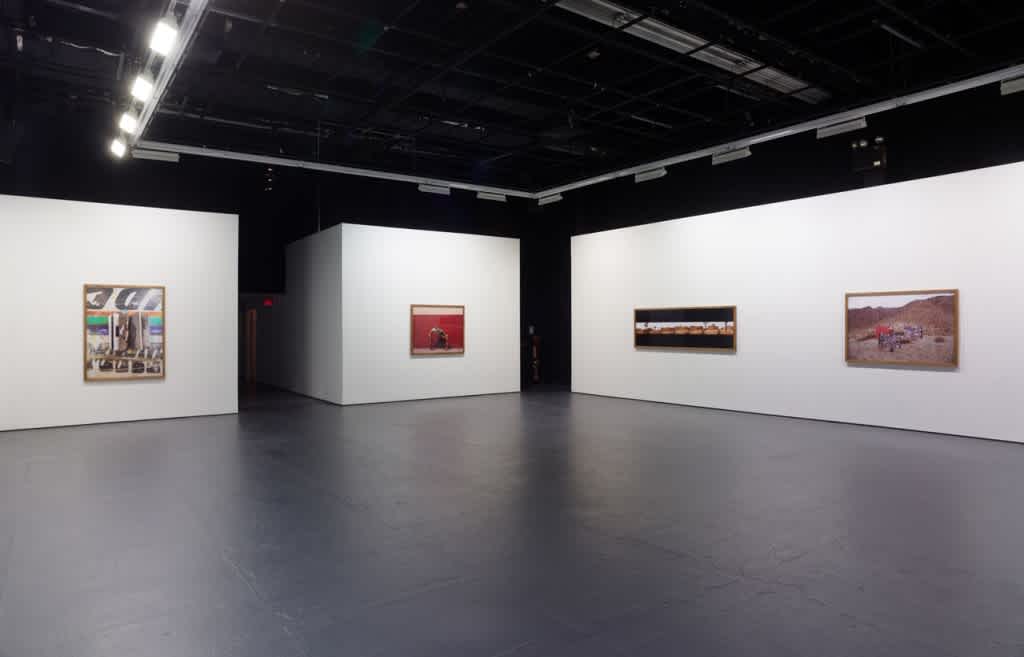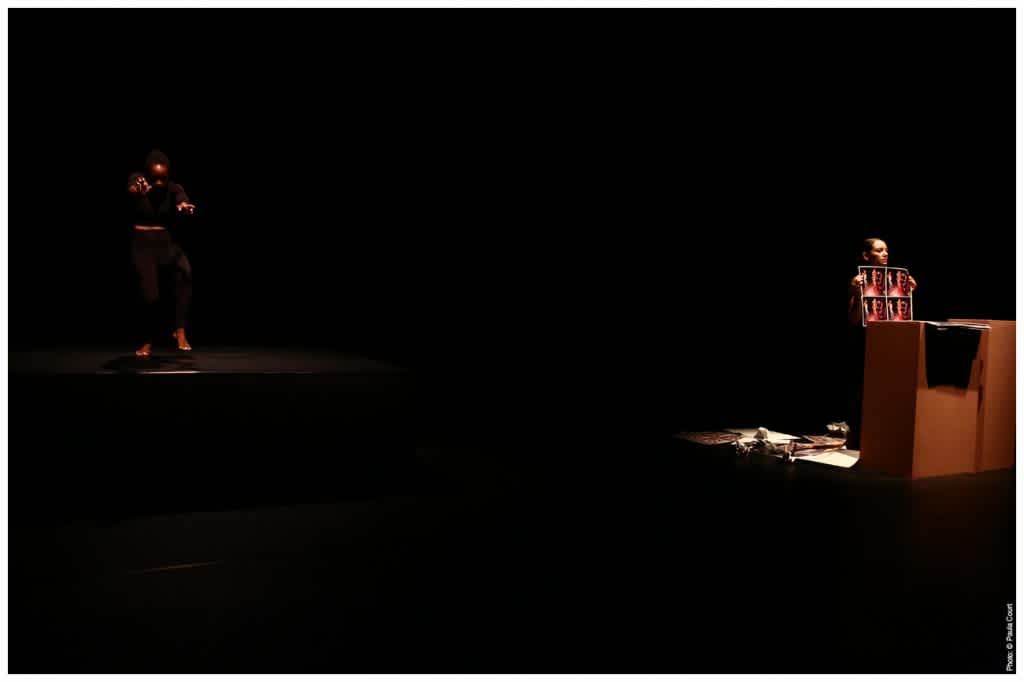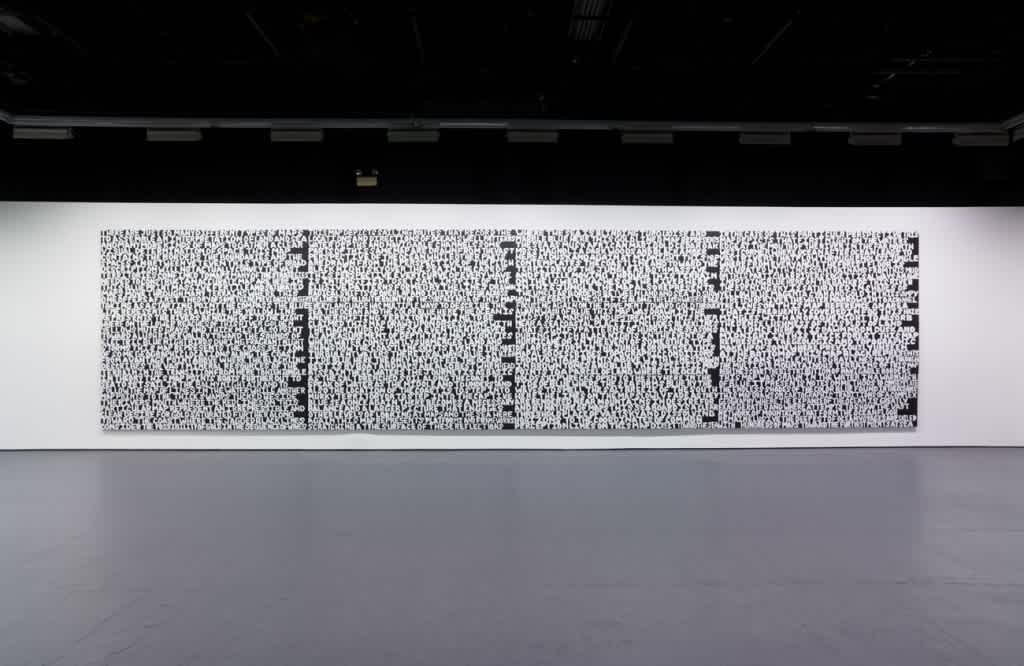
Credits:
By Angelique Rosales Salgado, curator and writer, with score by cry$cross, multidisciplinary artist and DJ
January 10, 2022
Aliveness vs. everything else: Easier to slip and slide sublime ambiguity (and currency?) with a body, choreography, performance, perhaps.
— Ralph Lemon (1)
CODEX, CODING, CODA, CODED. To begin with a few words, we can trace the ways language is at the center of our constructed identities, and the images created by them. Language is plastic; as is the organization of sexuality, and race. The ways we categorize, keep, care, and recall are collections of codes held in our bodies informed by practices of habit. All codes can contain loopholes—cue the slip mentioned above—or ambiguities and inadequacies within a “system” that allow for refusal. A loophole can be an “error” or opening in a computer code, for instance, or a source of retreat that extends ongoing dialogues, creates new relations, and nurtures collective intellectual and creative labor. (2) Within a reimagined frame of coding, we can interrogate experience, memory, and present and future histories to reassess the boundaries of landscape across bodies and their (our) collected archives.
Xaviera Simmons is interested in how an artist collects. Her language of making, spanning photography, performance, video, sculpture, and installation, follows her desire to move cyclically between mediums. Each process Simmons pursues finds its focus in her commitment to investigate layers of history through (migratory) experience, memory, and abstraction. In 2016, she presented CODED at The Kitchen, an exhibition organized by Matthew Lyons consisting of a multi-media installation in the gallery unveiled in June, followed by a movement-based performance in December. Her two-part conceptual project queries archival images—art historical and digital—of queer gestures and histories in painting, photography, and Jamaican dancehall culture.


Thirteen works installed in The Kitchen’s upstairs gallery explore sensual poses and body language in line with ideas of constructed masculinity and femininity. Simmons’s lens-based practice extends the limits of photography as a codified medium. With collected archival images of queer histories as source material, she reshapes the ways photographs can create an indexical relationship to racial, gendered, or sexed difference. Rather than make direct claims of sexuality between forms, her work coats the room with subtle contradictions that prompt a read between lines of movement and expression. Bodies are often collaged in grids of multiples that unfold like maps, like in Untitled (Yellow #1) and Untitled (Yellow #2) (both 2015). Faces and limbs in works such as Red (Number One) (2016) are obscured enough to hide the entirety of their shape. Simmons’s geographies of queerness or psychological landscapes gesture toward organic materials such as water, sand, sunlight, and the textures of an environment. Portraits and landscapes become one another, and bodies refuse identification or blend into each other altogether.


In Landscape (Two Women) (2007), we are seduced enough by what we see to speculate on the biography of a place. But, the figures' presence within the environment recontextualizes expectations of who might hold space there, and what might take place in that holding. Simmons’s staging of photographs strikes a balance between fiction and non-fiction: one that centers the suggestion of performance as a key facet of individuality, despite a desire (or not) for legibility. The dancehall riddims she draws parallels to—with less emphasis on melody and larger emphasis on drum beats and low frequency bass vibrations—underscore the social grounding of the culture. Bodies and bodies of water within Simmons’s video monitors dance—albeit in a silent way. They move with a mediated abstraction that slows, but still claims, an outward sensuality.
The largest work in the gallery, Saturated (2016), a black-and-white wood-paneled painting of words, moves beyond a speculation of coded behavior to create an almost-literary space that details stories of maps, the sea, unclothed bodies, and landscapes. Amplifying the scale of repeated text to that of a photograph or painting, Simmons invites us to participate in a collective, problematizing read: how does memory toggle our perception of reality? And more explicitly, what (or whose) memories are coded into history?
LISTENING COLLECTIVELY, TOO, can make legible the performative record of our histories—spoken or embodied. cry$cross, a multidisciplinary artist and DJ based in Brooklyn, accompanies the text here by wrapping my words with a thirty-three-minute score (available to play at the top of the page). An invitation to hear, see, pause, and revisit a loop of sound’s potential; to float past memories and future desires into the present. Her deeply melodic tracks and transitions, often an ode to Black and Brown trans and queer community, function as an alternative citation between text and sound. She brings into the text a version of the club—allowing my writing to perform that unrestrained site for self preservation that allows you to create space on your own terms. Carefully coded into this context, cry$cross’s engagement with Simmons’s archive contributes to a mapping of new territories.
Simmons’s exhibition at The Kitchen laid the foundation for her conceptual performance CODED held months after. She has engaged topics of queerness and cruising (a heavily coded and queer topic) before, as part of a performative project at the High Line in 2014 organized by Cecilia Alemani titled Pier 54. (3) In it, Simmons staged a photo shoot with five dancers by the water that recreated photographs found in her research of the history of piers as sites for cruising and sexual and artistic experimentation. But CODED was her first time working in the theater. Simmons’s performance unfolded in The Kitchen’s first-floor black box, framed by “its remarkable transitional empty [and economically threatened] black space”—characteristics Ralph Lemon recently recalled when discussing his work Rant #3 as staged years later in February 2020 in this same space, then on the brink of renovation, and one week before lockdown began. (4) Traversing contexts, Simmons indeed positions this theater as a Black space. By turning inside out the whiteness of the gallery’s walls, that slip created in her juxtaposition of time and experience, she recalls a history of Black performers in The Kitchen’s downtown space before her: Ishmael Houston-Jones and Fred Holland, Derrick Adams, Alicia Hall Moran, Adrian Piper, Rodney McMillian, Blondell Cummings.
Simmons cast three female-identifying dancers and one male performer to collaborate on her hour-long performance. Observations of gay male aesthetics were teased out and laid onto female bodies in motion—in particular via daggering, a form of dance found in Jamaica that captivated her for similar qualities of “strength and tenderness.” Although daggering is a typically overtly suggestive and heteronormative dance, Simmons inverts its language in motion, and the language of homoeroticism in images, to produce new choreographies that foreground her ideas of queer desire. Her lyrical combinations of poetry and motion ask how perspectives can shift when we reinterpret movement. Simmons’s making here advocates for acts of looking that make visible, too, a street-bound, pedestrian movement of nightlife, style, liveness, and encounter—happenings of daily life that are deeply integral to the mutually defining, two-way linkage of bodies and cities like New York City.
The choreography and images in CODED are not radical insofar as they connote extremity, but they are radical in their affirmation of an investment in care. Dressed in all black, the dancers appear like they are moving for each other within a sequence that allows each of their bodies to fit into one another’s movements. In their circular motions, the performers periodically intertwine arms, first in a pair and then all together, shifting, too, into seated positions. While dance formations with odd numbers like three can be notably difficult to choreograph, Simmons knows how to tune our gaze to shape and not symmetry. Sonically, there is a noticeable absence of sound, with focus on the fluctuating inhales and exhales of the performers, and a periodic score of isolated drums that mirrors Jamaican dancehall rhythms.


Interspersed within the performance, a Black man reads a poem about a lover or lover(s) spoken indirectly like a monologue. The prose teeters the line of being almost too sensual in its language, but its understood overstatement of drama lands subtly. Enunciated words, pronouns, and time markers like “them,” “him,” “us” and “was,” “is,” “me,” somehow merge to feel like abstract turns in the composition’s score. Characters result from large color photographs one of the dancers crumples and couples on the ground, but also from the reading and the group of three dancers intertwining and separating into clusters of movement. Simmons returns to “daggering” now, in a decidedly self-authored queer space that leads it, perhaps, toward a gender-expansive future. The choreography slips away just when we grasp onto a repeated movement, along with the light and images on paper, replaced with a projected video of nude bodies moving in water. The performance continues to emerge in fragments.
MOVEMENT IS AT THE CORE of a diasporic reality: transits in the cultural logics of a place and transit across landscape. By mapping those ideas in her performance, Simmons enables us to ask after diaspora’s origin point and where that origin point might exist within queerness. Within her directorial choices, Simmons develops a link—a Black and queer loophole—between these images, videos, and languages of moving.
Locating a (Black) (queer) archive like Simmons’s exhibition within The Kitchen’s (digitized) archive proposes a site of conversation animated by the audiences that emerge from and move with it. Across its institutional history, The Kitchen continues to renew its commitment to experimentation. In proportion to the intimacy of CODED, we are free to contemplate the necessity of engaging the sheer pleasure of looking at bodies in motion. To visualize, perhaps, how we might carry beauty’s knowledge with us and make new worlds. (5)
BIOS
Angelique Rosales Salgado is a Mexico City-born curator and writer based in New York City with a focus on performance and time-based work. Their practice explores queer study, experimental dance, and sonic research.
Crystal Simone (cry$cross) is a multi-hyphenate visual, digital, sound artist and DJ based in Brooklyn, NY.
CREDITS & FOOTNOTES
Footnotes: (1) Ralph Lemon, “Performing at a Distance,” MoMA Magazine, 2020. https://www.moma.org/magazine/articles/369. (2) “Loophole of Retreat,” organized by Simone Leigh, Saidiya Hartman, and Tina M. Campt was a rejuvenating daylong gathering on April 27, 2019 dedicated to the intellectual life of Black women. Sharing its title with Leigh’s concurrent exhibition at the Guggenheim, the program brought together an international constellation of writers, artists, poets, filmmakers, and activists. (3) Pier 54 was an exhibition in 2014 conceived as a tribute to and reaction against Pier 18, a legendary project organized by artist and curator Willoughby Sharp in 1971, which featured only male artists. Both a re-enactment and an exercise in historical revisionism, Pier 54 took place during the summer on Hudson River Park’s Pier 54: this time all women realized projects that responded to the location and engaged with the changing landscape of the waterfront. (4) Lemon, “Performing at a Distance." (5) See Christina Sharpe, “Beauty Is a Method,” e-flux Journal issue #105, 2019. https://www.e-flux.com/journal/105/303916/beauty-is-a-method/.



